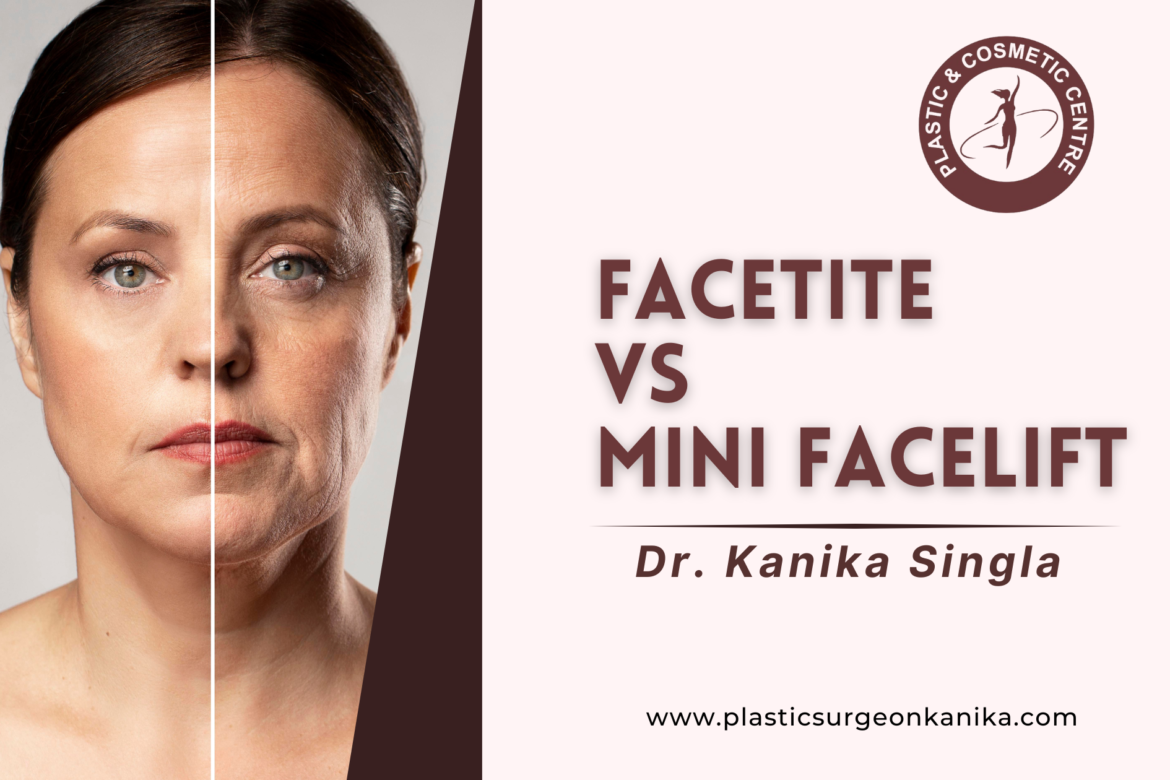In the quest for a youthful appearance, many individuals explore cosmetic procedures such as FaceTite and Mini Facelift. These techniques offer different approaches to facial rejuvenation, catering to varying needs and preferences. Let’s delve into the details of each method to understand their differences and similarities.
What is FaceTite?
FaceTite is a minimally invasive procedure that utilizes advanced radiofrequency (RF) technology to tighten the skin and contour the face. During the procedure, a small probe is inserted beneath the skin, delivering controlled RF energy to target areas. This energy heats the tissues, stimulating collagen production and causing the skin to contract, resulting in a firmer, more youthful appearance. It is particularly effective for addressing mild to moderate sagging and can be performed under local anesthesia, offering minimal downtime compared to traditional facelift surgery.
Mini Facelift:
On the other hand, a Mini Facelift, also known as a “weekend facelift” or “S-lift,” is a surgical procedure that involves making small incisions around the ears and tightening the underlying muscles and tissues. Unlike a full facelift, which addresses the entire face and neck, a Mini Facelift targets specific areas such as the jowls and lower face. While it is more invasive than FaceTite, it offers more dramatic and long-lasting results, making it a preferred choice for individuals with moderate to severe signs of aging.
Is FaceTite as good as facelift surgery?
While FaceTite offers significant benefits in terms of minimal invasiveness and quicker recovery compared to traditional facelift surgery, it may not achieve the same level of tightening and lifting as a surgical facelift. The choice between FaceTite and facelift surgery depends on the severity of aging concerns and the desired outcomes of the patient.
How long does it last?
The results of FaceTite can last for several years, although individual outcomes may vary depending on factors such as skin quality, aging process, and lifestyle habits. Maintenance treatments may be recommended to prolong the effects of FaceTite over time.
How long does the procedure take to perform?
This surgery typically take between one to two hours to perform, depending on the areas being treated and the extent of correction required. The procedure is performed on an outpatient basis under local anesthesia, ensuring minimal discomfort and downtime.
Is FaceTite painful?
Most patients report minimal discomfort during the procedure. Local anesthesia is administered to ensure a pain-free experience, and any post-procedural discomfort can be managed with over-the-counter pain medication.
Recovery and Downtime After FaceTite: What to Expect
Recovery after surgery is relatively quick, with most patients able to resume their normal activities within a few days to a week. Some swelling, bruising, and mild discomfort may occur initially, but these side effects typically subside within a week or two.
Finding the right FaceTite specialist
Choosing a qualified and experienced specialist is essential to achieving optimal results and ensuring a safe procedure. Look for board-certified plastic surgeons or dermatologists with expertise in facial rejuvenation and a track record of successful FaceTite outcomes.
Visit: plastic surgeon in meerut
In conclusion, FaceTite and Mini Facelift offer effective solutions for facial rejuvenation, each with its own set of advantages and considerations. Understanding the differences between these procedures and consulting with a qualified specialist can help individuals make informed decisions based on their unique needs and aesthetic goals.
FAQ
- FaceTite is a minimally invasive procedure that utilizes radiofrequency technology to tighten and contour the skin, while Mini Facelift is a surgical procedure that involves making small incisions to lift and tighten the underlying tissues of the face.
- FaceTite is ideal for individuals with mild to moderate skin laxity who desire subtle improvements without surgery, while Mini Facelift is suitable for those with more advanced aging concerns who require more extensive rejuvenation.
- FaceTite can provide noticeable improvements in skin tightness and contour, but the results may not be as dramatic or long-lasting as those achieved with Mini Facelift.
- Mini Facelift offers more comprehensive tightening and lifting of the facial tissues, resulting in more significant and enduring rejuvenation.
- The severity of your aging concerns: FaceTite is best suited for individuals with mild to moderate skin laxity, while Mini Facelift may be more appropriate for those with advanced signs of aging.
- Desired outcomes: If you’re looking for subtle improvements with minimal downtime, FaceTite may be the preferred choice. However, if you seek more dramatic and long-lasting results, Mini Facelift may be a better option.
- Recovery time: FaceTite typically involves minimal downtime, allowing patients to resume their normal activities quickly. In contrast, Mini Facelift may require a longer recovery period due to its surgical nature.












Leave a comment